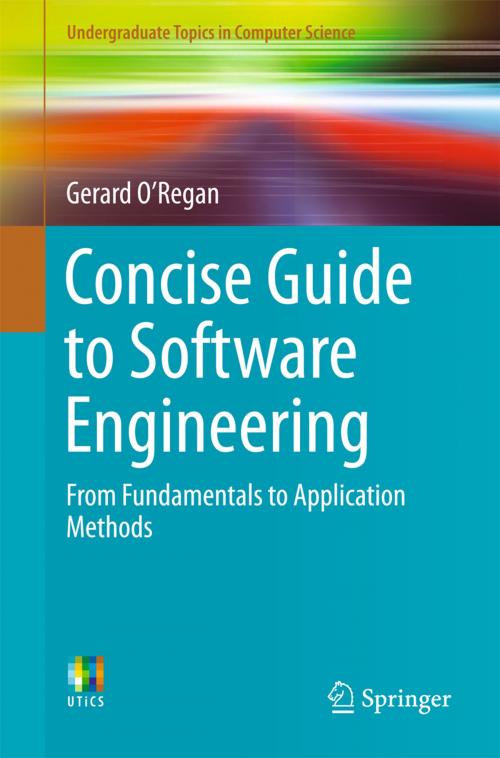Concise Guide to Software Engineering
From Fundamentals to Application Methods
Nonfiction, Computers, Advanced Computing, Engineering, Computer Engineering, Programming, Software Development, General Computing| Author: | Gerard O'Regan | ISBN: | 9783319577500 |
| Publisher: | Springer International Publishing | Publication: | May 30, 2017 |
| Imprint: | Springer | Language: | English |
| Author: | Gerard O'Regan |
| ISBN: | 9783319577500 |
| Publisher: | Springer International Publishing |
| Publication: | May 30, 2017 |
| Imprint: | Springer |
| Language: | English |
This essential textbook presents a concise introduction to the fundamental principles of software engineering, together with practical guidance on how to apply the theory in a real-world, industrial environment. The wide-ranging coverage encompasses all areas of software design, management, and quality.
Topics and features: presents a broad overview of software engineering, including software lifecycles and phases in software development, and project management for software engineering; examines the areas of requirements engineering, software configuration management, software inspections, software testing, software quality assurance, and process quality; covers topics on software metrics and problem solving, software reliability and dependability, and software design and development, including Agile approaches; explains formal methods, a set of mathematical techniques to specify and derive a program from its specification, introducing the Z specification language; discusses software process improvement, describing the CMMI model, and introduces UML, a visual modelling language for software systems; reviews a range of tools to support various activities in software engineering, and offers advice on the selection and management of a software supplier; describes such innovations in the field of software as distributed systems, service-oriented architecture, software as a service, cloud computing, and embedded systems; includes key learning topics, summaries and review questions in each chapter, together with a useful glossary.
This practical and easy-to-follow textbook/reference is ideal for computer science students seeking to learn how to build high quality and reliable software on time and on budget. The text also serves as a self-study primer for software engineers, quality professionals, and software managers.
This essential textbook presents a concise introduction to the fundamental principles of software engineering, together with practical guidance on how to apply the theory in a real-world, industrial environment. The wide-ranging coverage encompasses all areas of software design, management, and quality.
Topics and features: presents a broad overview of software engineering, including software lifecycles and phases in software development, and project management for software engineering; examines the areas of requirements engineering, software configuration management, software inspections, software testing, software quality assurance, and process quality; covers topics on software metrics and problem solving, software reliability and dependability, and software design and development, including Agile approaches; explains formal methods, a set of mathematical techniques to specify and derive a program from its specification, introducing the Z specification language; discusses software process improvement, describing the CMMI model, and introduces UML, a visual modelling language for software systems; reviews a range of tools to support various activities in software engineering, and offers advice on the selection and management of a software supplier; describes such innovations in the field of software as distributed systems, service-oriented architecture, software as a service, cloud computing, and embedded systems; includes key learning topics, summaries and review questions in each chapter, together with a useful glossary.
This practical and easy-to-follow textbook/reference is ideal for computer science students seeking to learn how to build high quality and reliable software on time and on budget. The text also serves as a self-study primer for software engineers, quality professionals, and software managers.















